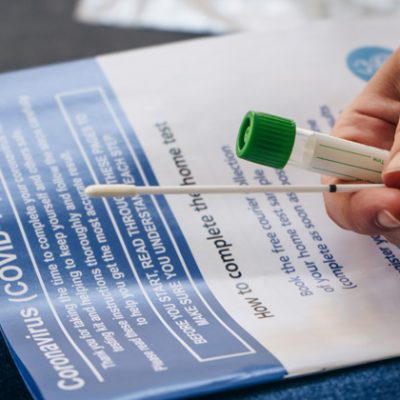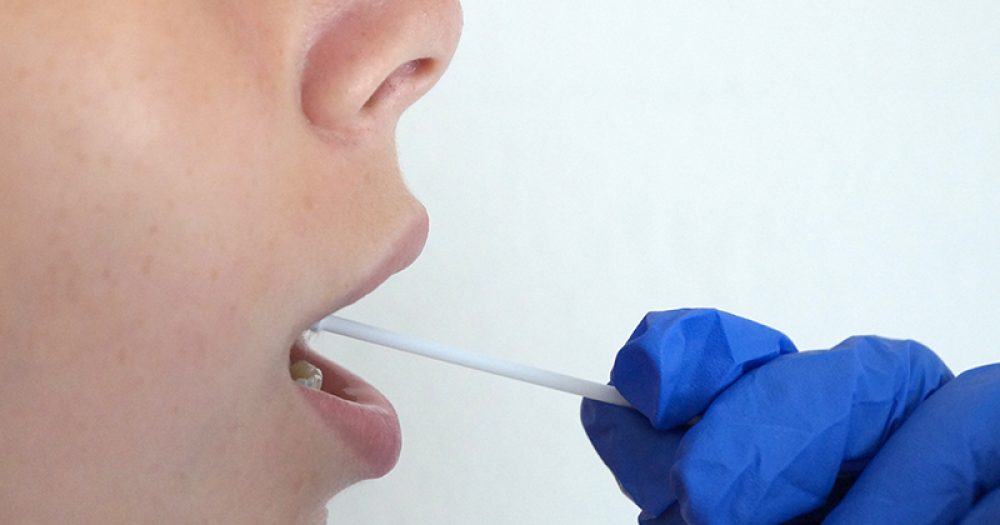Around 3,000 positive Covid test results have been recorded by secondary schools since the beginning of the year, with pupils slightly more likely to test positive than staff.
NHS Test and Trace statistics show that just 0.14 per cent of all lateral flow tests (LFTs) results reported by secondary schools so far this term have been positive.
Secondary schools have been testing their staff and those vulnerable pupils and children of key workers who are still attending school during partial closures. Staff make up the majority of those tested.
In total, 2,097,267 LFT results were reported by secondary schools and colleges between January 1 and February 24. Of those, just 3,017 were positive, while 3,727 were recorded as ‘unknown/void’.
When broken down further the data shows secondary pupils are slightly more likely to receive a positive test result than staff, with a positivity rate of 0.19 per cent compared to 0.13 per cent among staff.
Biostatistician professor Jon Deeks, of the Institute of Applied Health Research at the University of Birmingham told Schools Week little could be read into the differences between the rates as they were so slight, but he warned both were extremely low.
In comparison, test and trace data for the nearly 14.5 million LFT tests logged on the National Testing Programme database since October shows an overall positivity rate of 0.6 per cent.
Fears testing will be a ‘waste of money and effort’
Deeks said he was “surprised by how low the number of detected cases were” and feared continued testing in school was a “waste of money and effort”.
“The issue when you’re not detecting many cases is you have to think very carefully ‘are you detecting more than we would get false-positives?’”, he explained.
The Department of Health and Social Care (DHSC) says the Innova SARA-CoV-2 Antigen Rapid Tests used in schools have a false-positive rate of 0.32 per cent.

From next week, secondary schools will be expected to test returning pupils three times on site within a fortnight, before switching to twice-weekly home-testing.
Staff will also be given test kits to test themselves twice weekly at home.
Pupils will be allowed to attend lessons as normal after their first negative result, but will need to isolate for at least 10 days if they test positive.
Positive test results from LFTs taken at home must be confirmed by a PCR test.
Deeks said he feared false-positives could mean pupils and staff having to self-isolate unnecessarily, leading to even more missed learning.
However there have also been concerns raised about the potential for false-negatives.
The government says LFTs only detect around 60 per cent of cases when performed by non-experts – although the chances of catching a case may improve with repeated tests.
While there are concerns this could mean the tests provide false assurance to those who receive a negative result, Dr Alexander Edwards, associate professor in biomedical technology at the University of Reading, told Channel 4 FactCheck “the messages from public health officials continue to be clear (I hope) that even if you test negative with a Covid-19 test, it still doesn’t ‘prove’ that you are safe and not infected.”
The Department of Health and Social Care has been contacted for comment.
Secondary schools have been closed to the majority of pupils since the beginning of the year, but most had set up testing sites over the Christmas break in anticipation for testing in January.
Last month the Department for Education released the first set of data of the mass asymptotic Covid testing programme within schools.
It stated that as of February 10, 97 per cent of eligible schools in England were ready to conduct testing.
Positivity rate higher among primary staff
The NHS data also shows that primary schools, school-based nurseries and maintained nursery schools recorded a slightly higher rate of positivity among their staff than secondary schools.
Primary staff have been conducting tests twice a week at home this term, but there has been no testing of primary pupils.
Between January 14 and February 24, 2,627,199 LFT results were recorded by primary and nursery settings. Of those, 4,953 were positive and 5,595 were void or unknown.
This means 0.19 per cent of tests taken across these settings resulted in positive results.



I think it good for all the schools going back next week. But I do think the government should have given the vacation to the teachers before they went back to school this would have given them some protection against the virus . Will people like invigilators be tested for the virus when they go into schools in May and June re the mock exams?
That’s because lateral flow tests are scarily inaccurate.
In Liverpool
Just 76.8% of people who did have the virus received a positive result (meaning the rest received false negatives).
Source https://fullfact.org/health/lateral-flow-test/
James,
It would have made a lot of sense if you had compared the number of positives they are finding with the number of positives by age group in the country. The ONS looks at a testing study of 1000s of people weekly to predict the percentage of people that are infected in the country and openly publishes the results.
The question to ask is, what percentage of the population that these tests could find have been found? To do that you have to look at the ONS data by age, but then adjust it for PCR CT value. The PCR tests find viral RNA. That can be from active viral particles or from what are basically dead viral particles that are left in the body for weeks after infectiousness has ended. The CT value of the PCR test is a kind of measure of viral load / infectiousness. The UK seems to generally think that a CT below 25 indicates a person is infectious and that above that they are not (lower CT number = more virus). This is a slightly wooly number, but the point is that the probability of infectiousness greatly goes down with a higher CT.
The lateral flow tests because of the way they work can only find people with higher viral loads of ~alive virus, so are a tool to catch infectious people. In the ONS survey only about 25% of people they tested had a CT below 25 meaning that probably only 25% were infectious. To find how many people the lateral flow tests could find I decided to take the ONS predictive infection percentages and divide them by 4 to get 25%. This is imperfect, but more accurate than looking at the test data in isolation.
It’s true that in some recent weeks the number of found positives with lateral flow tests has been low, however the number of infectious people in the population is much lower than before.
Below shows a rough guide of how the tests are doing in 3 weeks. It shows the percentage of positives in the ONS survey that the school tests found. Disclaimer: The ONS only breaks the CT info out into 4 percentile groups and it’s a prediction based on a sample size so there is some wibbly wobbly scienceness. 🙂
Primary schools
————————-
28/1/20 – 03/02/21: 70% of ONS predicted positives found
04/02/21 – 10/2/21: 78%
11/2/21 – 17/2/21: 150%
Secondary schools & Colleges
————————————
28/1/20 – 03/02/21: 39%
04/02/21 – 10/2/21: 53%
11/2/21 – 17/2/21: 54%
Higher Education
———————-
28/1/20 – 03/02/21: 131%
04/02/21 – 10/2/21: 117%
11/2/21 – 17/2/21: 133%
Sources:
———–
Search for “Coronavirus (COVID-19) Infection Survey” on the ONS website to get the data.
Search for “NHS Test and Trace (England) statistics” on [gov . uk] website to get testing data.
Disgraceful handling of whole aspect of education and covid. Last minute decisions I’ll thought out repercussions of these decisions. The politicians have no clue as to how much effort put in by adults in school. And 1% pay rise for NHS. Unbelievable! No doubt MPs will have a freeze? Yours MRWalker
The number of positives found has to be compared with the number of people infected in the UK. When you do that using the latest ONS infection survey then the results are actually not that bad.
Lateral flow tests only find infectious people. PCR lab tests find people that are infectious AND people that are NOT infectious, but still have inactive viral genetic material in their body. If you adjust the ONS infection survey data so that it only includes the people who are infectious by using the CT value data then the rate the lateral flow tests are detecting the infected is anything between 40-100% depending on the day.